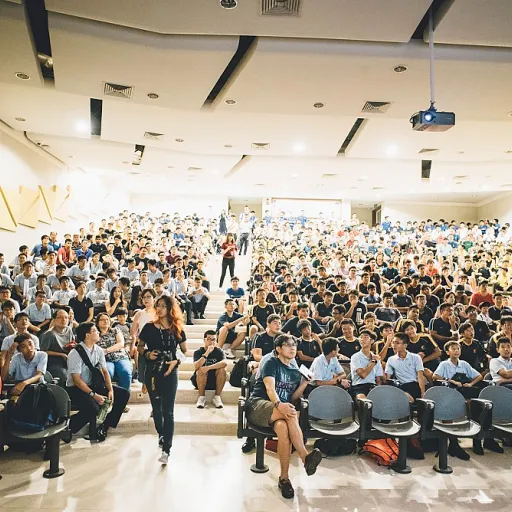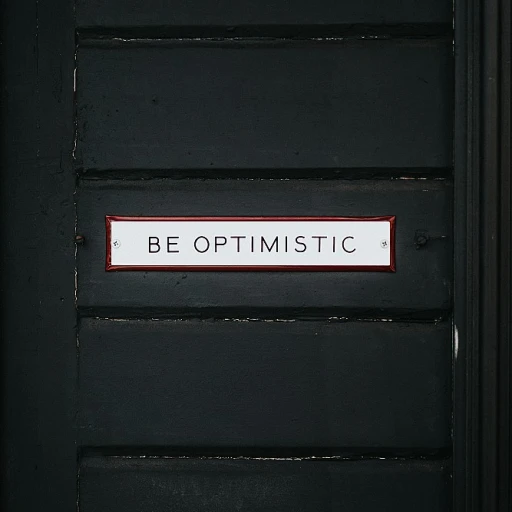
Understanding the Skills Gap
The Growing Disconnect in the Hiring Process
The skills gap has become an increasingly pressing issue for companies across various industries. It reflects a disconnect between the skills employers need and the skills that job seekers possess. This gap can significantly impact the hiring process, making it challenging for organizations to find candidates with the right expertise. Understanding this gap is crucial for improving the candidate experience and ensuring a smoother onboarding process. One contributing factor to the skills gap is the rapid pace of technological advancement. As industries evolve, so do the skills required to excel in them. Companies must adapt their talent acquisition strategies to meet these changing demands, which includes creating more inclusive job descriptions and focusing on diversity equity initiatives. Employee retention can be bolstered by recognizing the skills gap and proactively working to bridge it. In addition to technology, biases in hiring practices can also exacerbate the skills gap. Inclusion DEI initiatives play an essential role in fostering a diverse candidate pool. By emphasizing diversity hiring and creating an inclusive workplace, companies can attract a broader array of talent, alleviating some aspects of the skills gap. Cultural factors also contribute to how candidates perceive and engage with potential employers. The company culture, if rooted in strong diversity equity, can enhance employee engagement and retention. Candidates feel more valued and are likely to be more committed when they see an organization's commitment to creating an inclusive environment. For more insights on improving hiring practices and addressing the skills gap, consider exploring effective templates for 1-on-1 meetings with your manager here. These meetings can significantly aid in developing strategies to enhance employee experience and address skills mismatches.The Role of DEI in Addressing Skills Gap
The Intersection of DEI and the Skills Gap
Addressing the skills gap in today's competitive job market requires a keen understanding of diverse concepts, notably those centered around Diversity, Equity, and Inclusion (DEI). DEI plays a pivotal role in creating a hiring process that not only enhances the candidate experience but also meets company needs effectively. A well-rounded DEI strategy starts with acknowledging that diversity hiring is key to broadening the candidate pool. By embracing diversity equity and inclusion, organizations can tap into a vast array of skills that different candidates bring to the table. Such efforts ensure a more inclusive workplace and encourage employee retention, leading to long-term organizational growth. To align DEI initiatives with closing the skills gap, companies must focus on:- Equity in Job Descriptions: Crafting job descriptions that are devoid of biased language helps in attracting more diverse candidates who meet the necessary skills. This practice fosters an environment where everyone feels valued and included from the onset of the hiring process.
- Inclusive Interview Process: Ensuring that the interview process reflects diverse perspectives can help in evaluating candidates more fairly. This may include training interviewers on implicit bias and promoting inclusivity throughout. By doing so, the company culture shifts towards one that values diversity equity and inclusion as core tenets.
- Effective Onboarding and Employee Engagement: The onboarding process should be inclusive and designed to make new hires feel welcomed. This boosts employee engagement and fosters an environment where talent can thrive, ultimately nurturing an inclusive workplace.
Creating Inclusive Job Descriptions
Crafting Impactful Job Listings for Improved Talent Acquisition
Creating job descriptions that are inclusive is fundamental in the quest to close the skills gap. This involves more than listing duties and qualifications. To reach a diverse pool of candidates, organizations need to craft descriptions that speak to a wide audience, ensuring that potential candidates feel welcomed and valued regardless of their background. Organizations aiming to enhance the candidate experience should focus on language that reflects the company's commitment to diversity, equity, and inclusion (DEI). Avoid using exclusive or gender-biased language that might deter certain groups from applying. Instead, emphasize the company culture of inclusion where all employees can thrive. Consider the following points when creating inclusive job descriptions:- Explicit DEI Commitment: Mention the company’s dedication to an inclusive workplace. Sharing insights about diversity hiring efforts can offer a genuine reflection of your organization’s values.
- Avoiding Jargon and Complex Language: Use clear and concise language to describe the duties and qualifications. Overly complex job descriptions might discourage potential talent from applying.
- Highlighting Growth Opportunities: Stress the importance of training and development programs within the organization, which can attract applicants eager to enhance their skills and grow with the company.
- Focus on Skill Sets and Potential: Instead of a strict list of qualifications, focus on key skills (formatted as KSAOs) and potential for growth. This approach can help identify candidates who might not meet every qualification on paper but possess the foundational skills and motivation needed for success. Explore the meaning of KSAOs here.
Training and Development Programs
Developing Diverse Talent Through Training
Creating a truly inclusive hiring process requires actionable steps toward closing the skills gap, which is where training and development programs play a crucial role. An organization's commitment to diversity and inclusion is reflected not just in hiring diverse candidates, but also in investing in their growth and potential. Expanding training programs provides diverse candidates with ample opportunities to grow within the company, ensuring they do more than just fill a role. By offering continuous learning, employees feel valued and engaged, which can significantly improve employee retention and create an inclusive workplace. Here's how companies can develop diverse talent:- Identify Skill Needs: Take the time to understand what specific skills are lacking in your current candidate pool. In collaboration with HR, the company can tailor training programs to bridge these gaps effectively.
- Create Tailored Programs: By developing programs that cater to the diverse needs of employees, businesses can foster a sense of belonging and inclusion, enhancing the overall candidate experience.
- Mentorship Opportunities: Pair new hires with more seasoned employees. This could mitigate the feeling of bias and provide mentees with relatable, successful role models.
- Foster an Inclusive Learning Environment: Set up platforms where employees can openly ask questions and access learning materials tailored to various learning styles. This promotes an equitable learning environment, honoring diversity in the learning approach.
- Leverage Technology: Use online platforms that are accessible to everyone, ensuring training sessions are inclusive. This can also serve a dual purpose of expanding the reach and flexibility of learning opportunities, thus accommodating busy schedules.
Leveraging Technology for DEI
Integrating Technology for Enhanced DEI Strategies
In the modern hiring process, leveraging technology has become indispensable for promoting diversity, equity, and inclusion (DEI) within organizations. Companies can adopt several innovative tools to enhance their DEI hiring efforts and create a more inclusive workplace. One of the pivotal ways technology assists in this process is through the implementation of bias detection tools. These tools help identify and mitigate unconscious biases in job descriptions, interview processes, and even in developing employee engagement surveys. By reducing bias, companies ensure that diverse candidates have equal opportunities during hiring, contributing to a richer candidate pool. Additionally, technology can streamline talent acquisition by automating certain steps in the process, thus enabling human resources teams to dedicate more time to building personal connections with job seekers. This human-centric approach enhances the candidate experience, making candidates feel valued and more likely to continue through the hiring journey. Social media platforms also play a crucial role by reaching a broader audience and attracting diverse talent from various backgrounds. Companies can strategically use these platforms to showcase their commitment to DEI initiatives, thereby strengthening their employer brand. Furthermore, online training tools and platforms can fortify employee development programs by offering content that promotes diversity awareness and inclusive practices. Lastly, leveraging technology for data analytics enables organizations to track and measure the success of their DEI initiatives. This data-driven approach allows companies to continually refine their strategies, ensuring effective inclusion and diversity hiring practices. Thus, the integration of technology not only supports DEI goals but also fosters a company culture that prizes equity and inclusion for all employees.Measuring Success in DEI Initiatives
Evaluating the Impact of DEI Initiatives on the Hiring Process
To truly gauge the effectiveness of DEI initiatives within your organization, it's essential to establish metrics that accurately reflect their impact on the hiring process and overall candidate experience. This evaluation is critical, considering that diversity hiring is not just about numbers but fostering an inclusive workplace where candidates feel valued.
Firstly, measuring the diversity of the candidate pool before and after implementing DEI initiatives can provide tangible data on its impact. This involves tracking the representation of diverse candidates at each stage of the hiring process. Additionally, analyzing how these initiatives influence the candidate experience, from application to onboarding, is crucial in understanding their overall success.
Employee retention rates post-hiring also serve as an indicator of a successful DEI strategy. A diverse employee base is more likely to remain in an organization if they feel a sense of inclusion and engagement. Integrating feedback mechanisms, such as surveys and interviews, helps assess whether employees perceive their workplace as equitable and inclusive.
Furthermore, tracking the progression and mobility of diverse talent within your company will shed light on the opportunities for growth and advancement that these initiatives afford. Monitoring such metrics can inform whether DEI efforts are appropriately aligned with talent acquisition goals and if they effectively reduce bias in the interview process.
It's also beneficial to consider the qualitative aspects of DEI success by examining the overall organizational culture. Employee engagement and dynamic interactions within teams are often reflective of a company's commitment to diversity, equity, and inclusion. A positive company culture, influenced by robust DEI practices, attracts and retains top talent, enhancing the overall value and reputation of the organization.
Ensuring that these measurements and insights are continuously reviewed and adapted is vital for maintaining the effectiveness of DEI initiatives. By doing so, organizations can sustain an inclusive atmosphere that not only attracts diverse candidates but fosters long-term employee satisfaction and loyalty.












